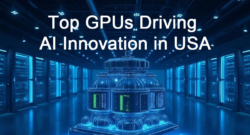AI works and evolves wherever there is data. And the data is everywhere – we just don’t always notice it. Even your home kitchen is teeming with data that can be collected, classified and analyzed in such a way that you buy the food that you surely eat, spend less time in the kitchen, and prepare home dishes more efficiently in terms of energy consumption.
And if you transfer these innovative opportunities to the business sector, then top AI companies have already made sure that the restaurant and food production business become more efficient, optimized, and profitable.
AI in the Food and Beverage Industry – How Can It Be Used
The AI in the food industry capabilities are limited only by the goals of the one who uses them – smart technology can help both increases the profit of the enterprise at the level of an individual company, and defeat hunger and reduce the amount of wasted food on a global scale. Below, the SPD Group has gathered the most promising and interesting areas of application of AI in the food industry and culinary services.
AI in Food Packaging to Make It Eco-Friendly and Personalized
The first goal that AI is fighting for in the context of product packaging is the maximum environmental friendliness. A recent study found that 74% of US buyers will refuse to buy a product that is packed in several layers of cardboard or cellophane due to environmental considerations. Thus, working with data makes it possible to understand consumer preferences regarding packaging and immediately satisfy their expectations.
Plus, there is an opinion that AI will help create the most personalized packaging of goods for each of the buyers, but this is more about marketing than about efficiency and environmental friendliness.
AI in Culinary to Reduce Time and Costs
In Tokyo, it is already possible to see a robot that fries pancakes. Of course, now it sounds more like a tourist lure, however, if you transfer this idea to the plane of the restaurant business, then introducing robotic cooks can
- help reduce the time (the robot does not need to interrupt and rest),
- reduce the cost of maintaining the staff of cooks (companies invest in technology once),
- and also it is no longer necessary to monitor the process since systems can work according to a given algorithm and self-learn.
In addition to Tokyo, it is possible to see these innovations at the Caliburger and the Dodger Stadium.
AI in Restaurants to Make Them More Efficient and Responsible
AI can help restaurants in several ways.
- Identify the most popular orders by working with data. Many small establishments still use paper and a pen (or the memory of their waiters) when they accept orders from visitors. However, if you replace this outdated method with a program with built-in AI, the restaurant will be able to store, organize and analyze data on which dishes are most popular.
- Keep clean in the kitchen. Cameras with built-in sensors help cooks not to forget about the rules of hygiene and cleanliness, and make sure that everyone in the kitchen is dressed in a clean uniform, for example.
- Reduce the volume of wasted products. Every year, restaurants waste $25 billion worth of food. Every year, 9 million people die of hunger. Therefore, 25 billion is not about money, it’s about lives that could have been saved if restaurants were more responsible for food waste issues.
AI in the Food Case
Regarding the latest possibility of using AI in restaurants, let’s look at an example. Winnow Solutions has developed a smart wastebasket that recognizes which products are thrown into it, calculates the weight of discarded products and immediately translates this into a cash equivalent.
Plus, the system organizes all the data that it receives and generates reports on what type of products are thrown out most often and what losses this means for the restaurant. Based on these data, the management, together with the chef, can optimize their procurement strategy, so that, relying on data on the most popular dishes, they can only buy products that will be precisely used for cooking. And these dishes will definitely be ordered and eaten by the guests.
AI in Products Quality Control to Reduce Food Waste and Returns
Poor-quality products that come out of the assembly line are one of the main sources of loss of profit for food producers. These are cases when products are either returned to the point of sale, or the manufacturer is forced to throw away part of the produced batch due to non-compliance with quality standards.
It is much cheaper and more effective to prevent these situations, especially since AI technologies can cope with this task. Using solutions like Agshift, it is possible to check each product for quality standards. For example, if we talk about growing apples, the AI system can compare each apple with an ideal sample, check it for dark spots, burrow worms and select only those products that meet accepted standards. All products that deviate from the norm can be sent for processing, for example, for additional purification and the creation of apple juice.
AI in Production Hygiene Maintenance to Keep Premises 100% Clean
When it comes to food production, cleanliness and hygiene are just as important as the quality of the products themselves. Intelligent cameras with recognition function can ensure that cleanliness standards at work are not violated by employees. For example, a camera equipped with sensors can recognize when one of the workers did not put on a special uniform before entering the production room.
AI in the Beverage Industry to Deliver a Personal Experience
It all started with Pepsi, which in 2014 created the so-called self-service terminal – a machine that allowed users to mix about 1000 different tastes of drinks in one glass. After that, user preferences were thoroughly analyzed and it was found that most often they mixed Sprite with cherry juice. Based on this trend, the company launched the production of Sprite with cherry flavors.
Coca-Cola went even further. Now the company uses AI to analyze data arrays from social networks. Based on these data, they are constantly working on possible portraits of target customers. By tracking the mentions of other brands, the company concludes whether it would be worth it to direct its advertising to a specific user or whether it would be a waste of money.
Impact of AI in the Food Industry – Wrapping It All up
As you can see, AI can satisfy the requirements of both parties – both the owners of the culinary and food production business and the end-users. If earlier food manufacturers sinned by sacrificing quality for profit, today this is not the approach that will work. Moreover, there is no need to sacrifice anything with AI – the level of product quality is increased along with the level of profit. Also, AI makes it possible to make the provision and consumption of culinary services more conscious – due to strict quality control at all stages, preventing food waste and more reasonable business planning.







